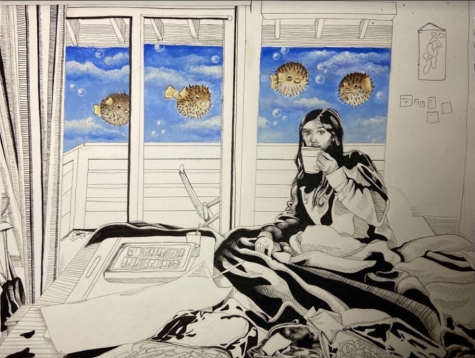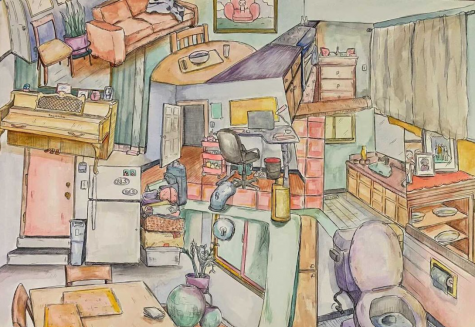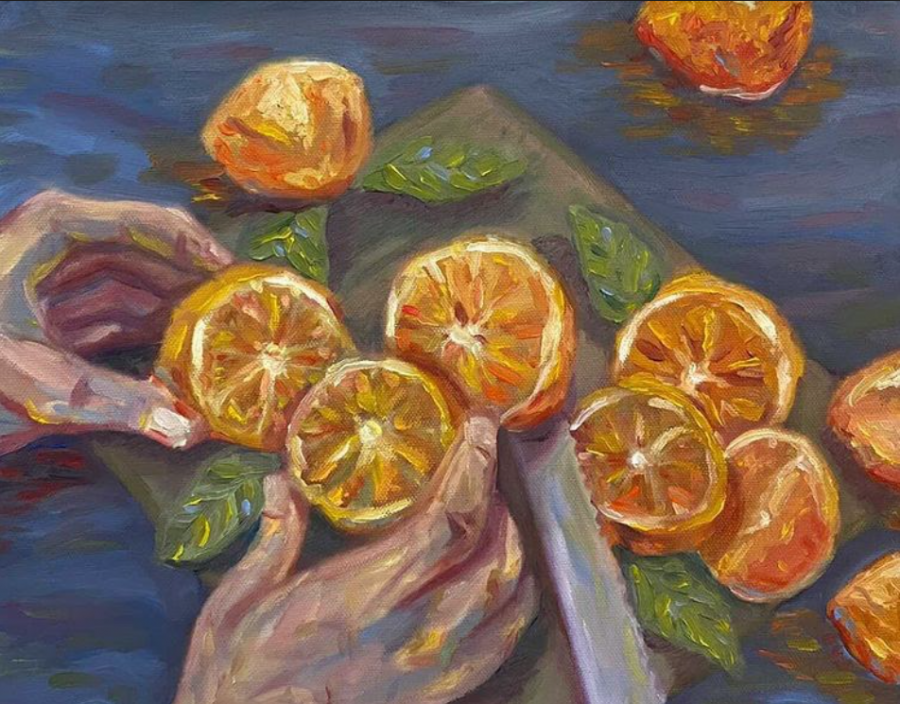Art after high school
The stigma against pursuing non-STEM related paths after high school
An oil painting of oranges done by MVHS alumnus Brett Park
April 4, 2021
“I remember telling someone I wanted to pursue animation,” senior Pearl Raina said. “And they were like, ‘You should learn how to code because it goes together,’ and I was sitting there like … ‘I don’t think you know what you’re talking about.’”
Raina, who plans to study animation in college, believes that as a result of the STEM-oriented mindset of people in the Bay Area, it is sometimes difficult for people interested in art to find opportunities to “hone [their] skills as creative people.” She feels this is due to a lack of knowledge of what art-related careers actually entail and that it is the reason why careers like product design are looked at more favorably, as people see more job prospects in that field.

Senior Purva Gangur plans to major in user interface and user experience, which she feels has both creative and technological aspects. She agrees that majors like hers are met with different responses than traditional art.
“Working with technology is what most people like to hear, [but] let’s say [that] I [was] majoring in painting or something,” Gangur said. “They’d be like ‘OK, that’s cool, but what’s going to happen to your future? [What] would your job look like? How are you going to earn money?’”
According to Gangur, people associate STEM with job stability because it is a growing field, whereas they look at the creative field as something people seldom succeed in. MVHS art department lead Brian Chow agrees, attributing part of this mentality to the jobs of many parents in the MVHS community.
“The community at MVHS tend to be people that are working in the STEM field, so they know technology, they know tech companies, and that’s sort of the predominant part of our economy,” Chow said. “I think people inherently promote what they know [when] it’s successful. If parents know that they’re in this field and they’re successful in [this] field, they tend to see that as being the [best] pathway.”
According to Chow, parents in the MVHS community also often fall victim to the “19th century notion of a journalist writing about romanticizing the artistic bohemian lifestyle” and the “starving artist myth.” Chow reasons that although those ideas may have applied hundreds of years ago, they are now outdated.
While USC freshman and MVHS alumnus Brett Park, ‘20, agrees that the stereotype associated with art careers is archaic and stems from people having to make money to “maintain the lifestyles [they] grew up in,” he also believes that there is some reasoning behind the statement.
“I think the starving artist is definitely a stigma and stereotype … [but] I think [the] capitalistic idea of artists not making that much money, if you look at statistics, it’s true,” Park said. “Our majors don’t make as much money as someone who goes into [computer science]. [So] I think parents are just super concerned for their kids.”
Park is currently majoring in communications at USC, but is applying for a second major in art. Park says part of his reasoning for choosing communications as a major was to conform to the expectation of not going into an art field for financial stability, but also that it teaches skills that are “transferable to different positions.”
“I’m [working on] a portfolio, and I do art on the side, like little webcomics and TikTok stuff,” Park said. “This year [I’m] trying to double major, so I went all out for my portfolio in the summer, planning out my pieces [knowing] I had to create 10-15 pieces for the USC art portfolio.”

Park believes that if the metric for success is money, it is harder for artists to compete with STEM majors because “there’s so much money in the tech industry.” However, he also believes that money isn’t the only component to success.
“I think artists are extremely happy [with] what they do because they are creating what they want, [and it] is a way of self expression when you’re constantly expressing yourself on your own terms,” Park said. “I think that is really liberating, and you don’t really see that as much in the corporate tech industry.”
Chow agrees that rather than having a set standard, success is subjective and its definition can vary from person to person.
“I think that we have that problem with defining [success], in that people think it’s about money and stature and getting a good paycheck, [which] provides stability and economic security, and everybody wants that I suppose at some point in their life,” Chow said. “But is it the only thing that you want out of life?”
For her own interpretation, Raina believes that success in art fields is much more ambiguous than in STEM fields. She says that competition in the art industry is extremely intense and those not passionate about it shouldn’t go into the art field, but notes that financial success in the creative field is possible.
“I know someone who is an illustrator, and she works at Warner Brothers now,” Raina said. “She also used to go to MVHS [and] she earns the same amount of money as a software engineer. She had to work a lot though a lot to get there, but she got there and [is] probably more successful than engineers in the Bay Area.”
Agreeing with Raina, Chow’s advice for anyone interested in majoring in art is to “do 100%” because you can’t “backdoor your way into the art field.”
“You can’t go major in pre-med, and then do [art] as a minor and decide [after] college [you] can go do art now,” Chow said. “[It’ll] be a hard road to travel. [It’s] the same thing if you want to be a concert pianist — you don’t tell someone [who’s] gonna be a concert pianist to go study biology and do piano on the side and [make] a decision after they graduate … You have to jump in with both feet and see where [you] land … It’s the same advice I’d give somebody for [any] major.”



















